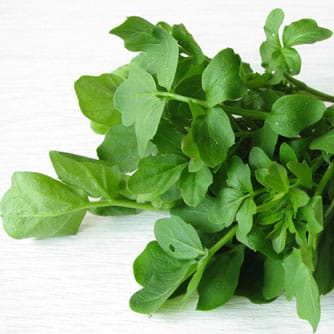Research conducted at Britain’s University of Southampton suggests that women could help to protect themselves from developing breast cancer by adding watercress to their diet. Molecular oncologist Professor Graham Packham and colleagues studied a small group of breast cancer survivors, who underwent a period of fasting before eating 80g of watercress and then providing a series of blood samples over the next 24 hours. Results showed that ingestion of watercress led to a rapid rise in plasma levels of a compound present in watercress called phenethyl isothiocyanate (PEITC). Previous studies have shown that PEITC decreases the phosphorylation of the translation regulator 4E binding protein 1 (4E-BP1). Decreased 4E-BP1 phosphorylation has been linked to the inhibition of cancer cell survival and decreased activity of the transcription factor hypoxia-inducible factor (HIF), which helps tumors grow by promoting the growth of new blood vessels. Further analysis of peripheral blood cells from four participants revealed that phosphorylation of 4E-BP1 was significantly reduced 6 and 8 hours after eating watercress. Study leader Professor Packham, a molecular oncologist at the University of Southampton, commented: “The research takes an important step towards understanding the potential health benefits of this crop since it shows that eating watercress may interfere with a pathway that has already been tightly linked to cancer development.” The authors concluded: “Dietary intake of watercress may be sufficient to modulate this potential anti-cancer pathway.”
Eating Watercress May Protect Against Breast Cancer
Syed Alwi SS, Cavell BE, Telang U, Morris ME, Parry BM, Packham G. In vivo modulation of 4E binding protein 1 (4E-BP1) phosphorylation by watercress: a pilot study. Br J Nutr. 2010; June 15:1-9. doi: 10.1017/S0007114510002217
RELATED ARTICLES




